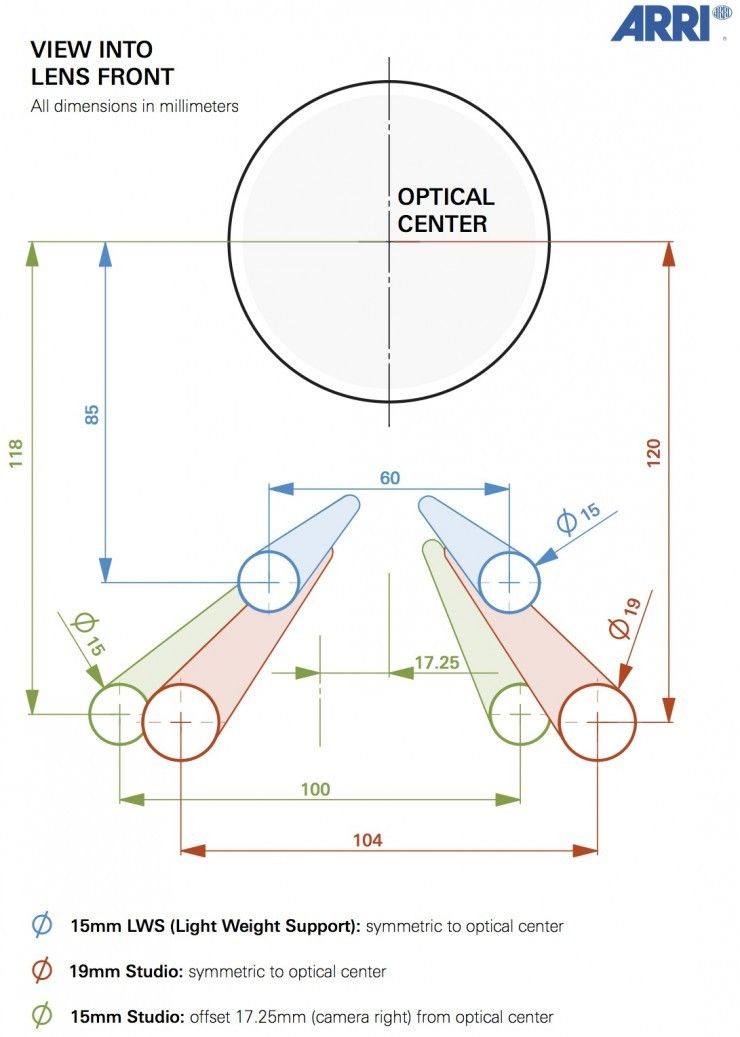I wanted to write about this subject to help avoid the confusion about rod standards. It took me a very long time to figure out the differences between rod setups and how to do each one correctly. Cameras used to have a standard lens height. The distance from the bottom of the camera to the center of the lens. Then DSLR’s came around and from then on the lens height is different on every camera. We used to be able to use a thing called a universal baseplate and it would allow you to use a rod setup on many different types of cameras. Now every camera is different thus the baseplates are mostly camera specific.
There are 3 different rod setups
15mm Lightweight Support (LWS)
15mm Studio
19mm Studio
15mm LWS is most common among DSLR shooters and indie/low budget.
Now here is where it gets tricky.
15mm Studio is the same 15mm rods as LWS but it is a wider spacing and offset from the optical center.
19mm Studio seems to be becoming more of the standard. It can handle more weight for the biggest and heaviest lenses and accessories.
Every piece of gear will be one of these three setups. All the accessories that will go on these rods must match the rod setup. Matte boxes require a very specific lens height 15mm LWS is different from 15/19 Studio. You need to have the right lens height on the camera to be in the center of the matte box. If you have a 19mm matte box and a generic baseplate on your camera you will most likely not be in the center of the matte box and/or offset
Most camera specific baseplates have 15mm LWS rod holes built in but that DOES NOT mean it will be a correct studio height. To be optically centered in studio mode you need a very specific riser/baseplate between the bridge plate and the camera. Most low end baseplates do not anticipate use as a studio riser. I have found very few riser baseplates that do this. Every accessory Arri makes is designed to the allow setups in LWS or studio mode. Their baseplate have LWS rods built in but are also the correct height for studio mode. They are good for both 15mm and 19mm studio as it is only a 2mm difference. Some baseplates may be the correct height for studio mode but they are very rarely labeled that way. The specs most often say “15mm rod standard” which could be studio or lightweight. The key word to look for is “studio.” The other problem is knowing that if it is for 15mm studio height, does it have the offset? It should because there it NO 15mm studio setup that should be optically centered. These are all things to keep in mind when buying or renting accessories like matte boxes, follow focus, lens motors, anything that may mount to the rods. Other manufacturers that usually adhere to the rod standard specs: Vocas, wooden camera, element technica. 15mm LWS accessories are abundant and easy to use for just about every camera but when you get into bigger cameras and lenses you need to start using the studio setups.
Nowadays the easiest thing is to just buy a baseplate riser that is specific for your camera but if you really want a universal one I recommend the Zacuto Universal Baseplate. It was the only “universal” plate that would get our F3 to a correct studio height as well as work in LWS mode. It also works in studio and LWS mode for the BMCC. It is well made, very universal and the plate will offset if you don’t have an offset balance plate. I also recommend the Wooden Camera 15mm studio bridge plate.
